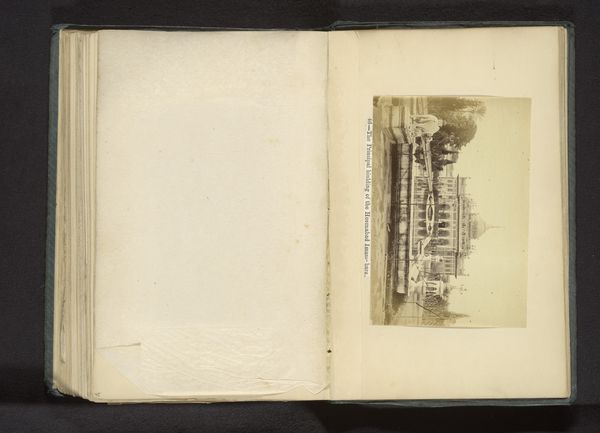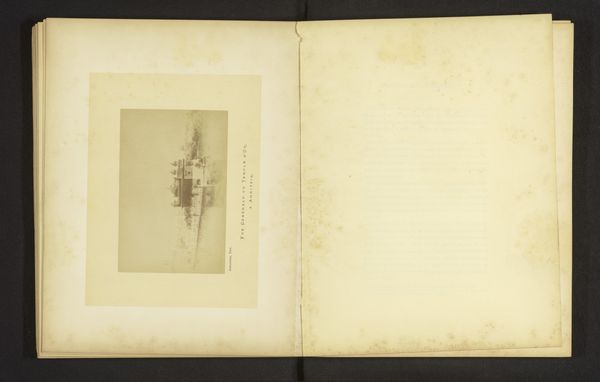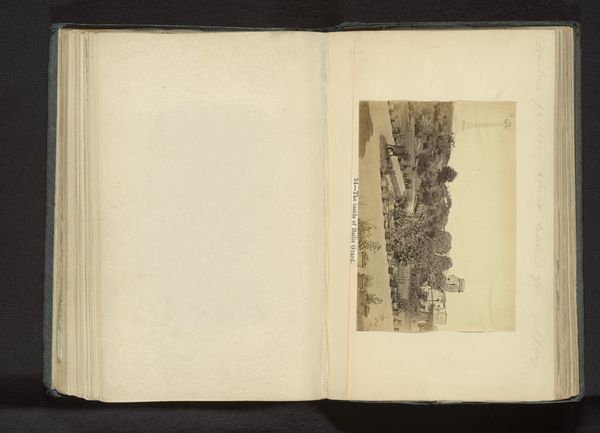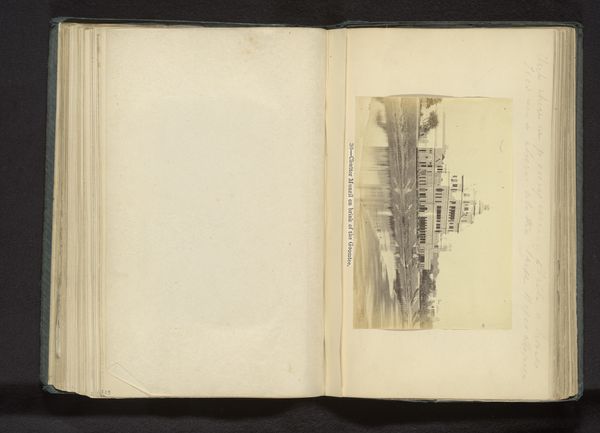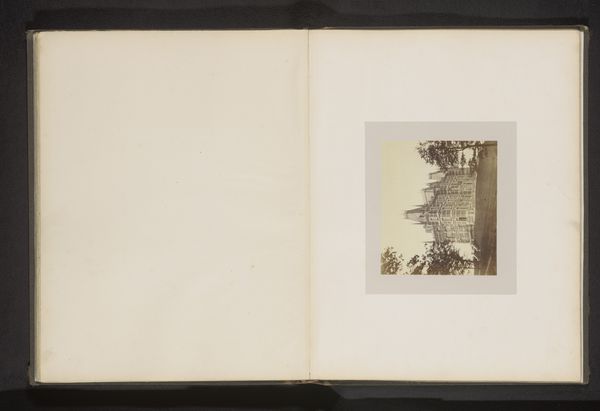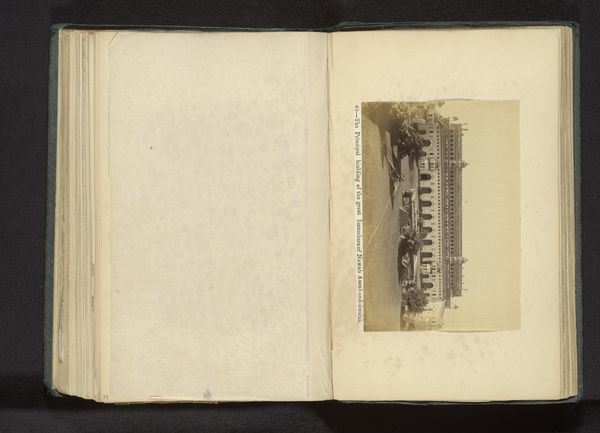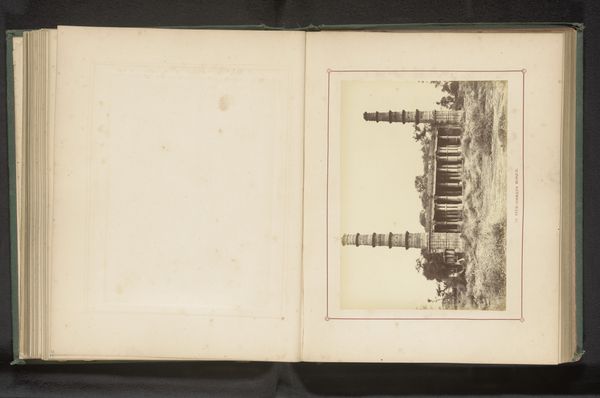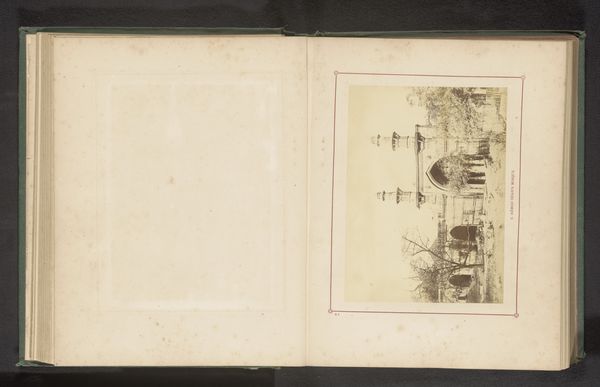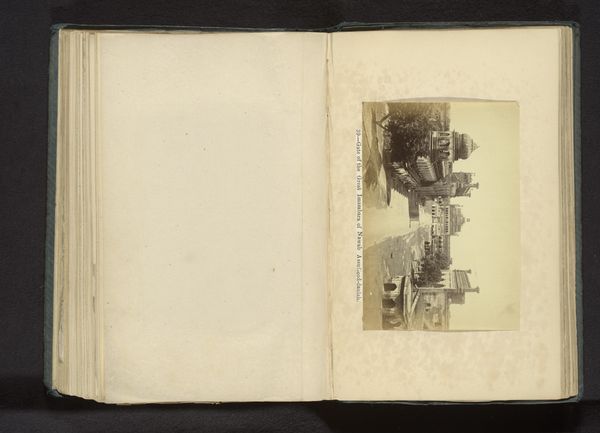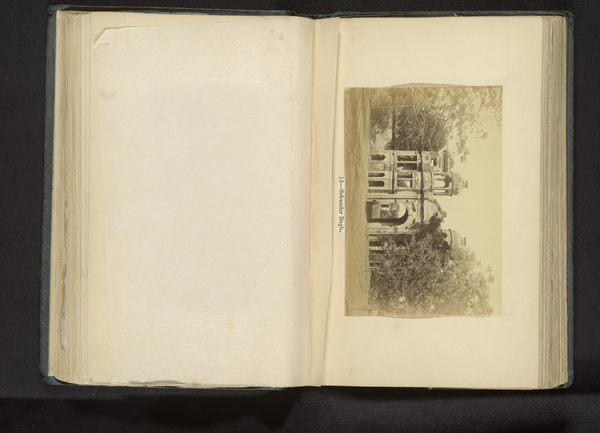
print, photography, albumen-print, architecture
#
aged paper
#
homemade paper
# print
#
sketch book
#
hand drawn type
#
landscape
#
personal journal design
#
photography
#
personal sketchbook
#
hand-drawn typeface
#
sketchbook drawing
#
islamic-art
#
sketchbook art
#
design on paper
#
albumen-print
#
architecture
Dimensions: height 105 mm, width 154 mm
Copyright: Rijks Museum: Open Domain
This photograph of the Tomb of Saadat Ali Khan in Lucknow was taken by Darogha Ubbas Alli. Images like this helped shape how the British and other Westerners understood India, and by extension, how Indians understood themselves. The image presents a picturesque view of the tomb, emphasizing its architectural grandeur. Lucknow, in the 19th century, was a city of immense cultural and political importance. As the capital of the Awadh region, it was known for its refined culture and architectural splendor, but under British rule these treasures became artifacts of colonial tourism. Photographs such as this one, compiled into albums, served not only as mementos but also as tools for cataloging and controlling the visual narrative of a colonized land. The photographer’s perspective, the framing of the subject, and even the choice of what to include or exclude, all contribute to a representation of power. Understanding the photograph means digging into the archives: colonial records, travelogues, and the biographies of those involved. The meaning of this image, therefore, resides not only in its aesthetic qualities but also in its complex socio-political context.
Comments
No comments
Be the first to comment and join the conversation on the ultimate creative platform.
